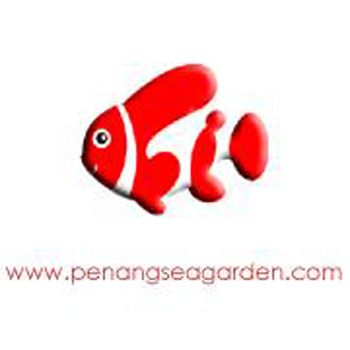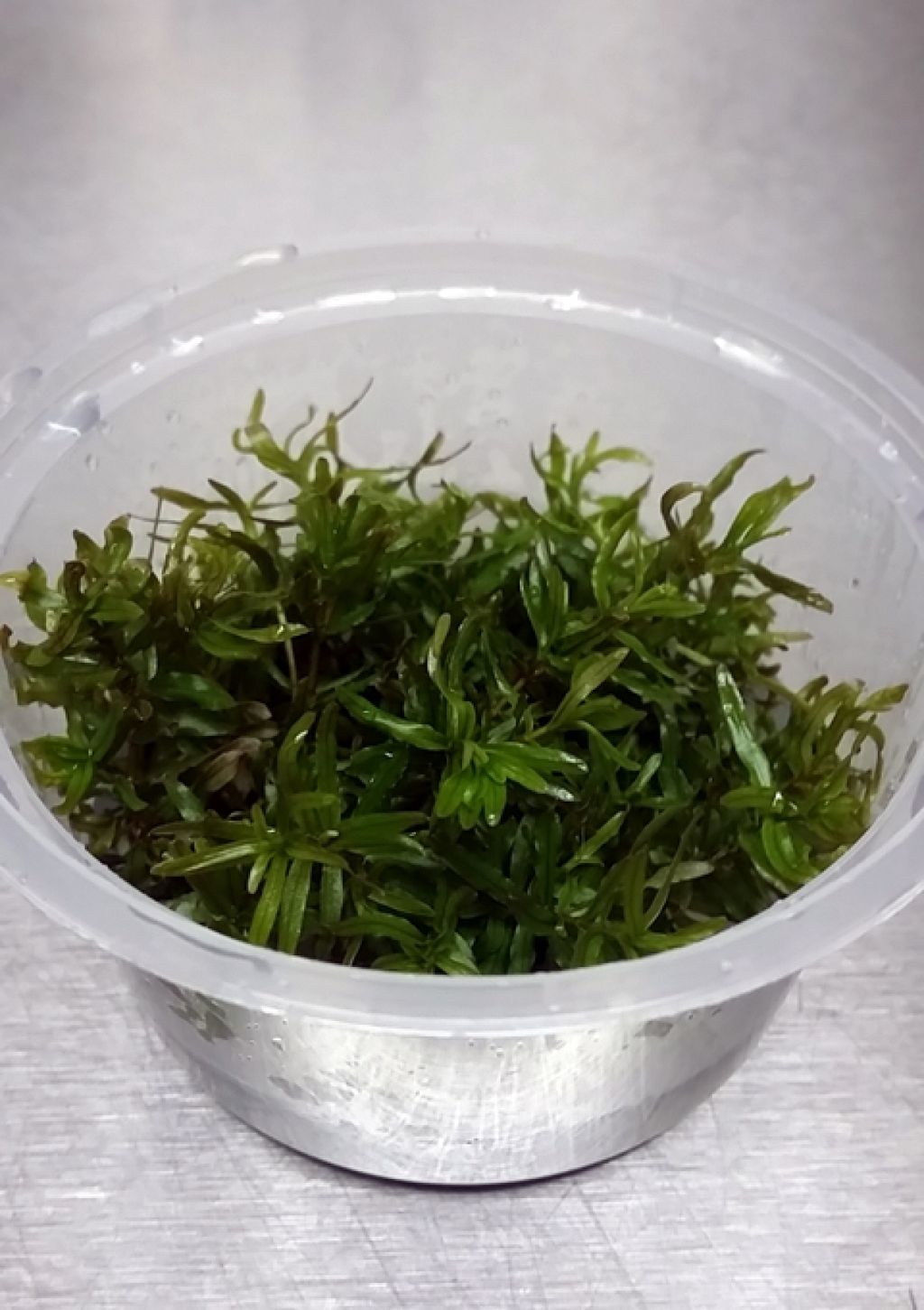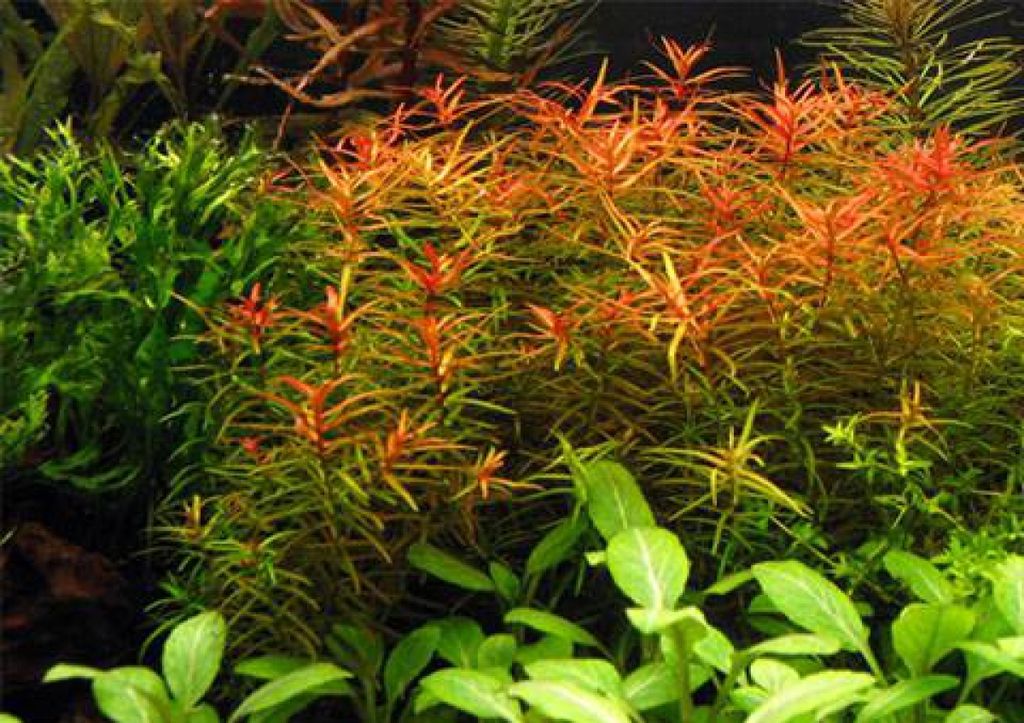

DIDIPLIS DIANDRA
Hardiness: Moderate
Light Needs: Medium
Plant Structure: Stem
Family: Lythraceae
Genus: Didiplis
Region: North America
Location: United States
Size: Individual stem width: 2-4cm (1-1.5in)
Growth Rate: Fast
Can Be Grown Emersed: Yes
Didiplis diandra (known in the past as Peplis diandra) can be found throughout the U.S., growing in or along the shores of ponds, lakes, and slow-moving streams. It is listed as an endangered plant in some states. When in good condition, the plant produces small pink capsules at the internodes of the stem. D. diandra is (and rightfully so) a very popular, common plant due to its unique, fine-needled foliage.
Although not too hard to grow, this small stem plant does place certain demands on the hobbyist in order to thrive. Lighting should be direct and relatively intense in order to prevent the lower portions of the plant from turning black and rotting away shoot for at least 2.5-3 watts per gallon or more. However, keep in mind that the higher the intensity of the lighting, the greater the demand for iron and micronutrients this plant will make, plants that seem very pale or bleached under intense lighting are most likely suffering from an iron deficiency. CO2 injection, although not completely necessary, does promote the fastest, most robust growth from this plant. Nitrate (NO3), phosphate (PO4), and potassium (K+) should be supplemented regularly, along with plentiful amounts of iron and other micronutrients. When D. diandra is in good health, it will blush differing shades of orange and red under intense lighting. Under moderate to low lighting, this plant will stay green.
This stem plant typically grows all the way to the surface of the aquarium, forming a lush ball of growth near the top due to intense branching. Trimming this plant across the top will promote the bushiest growth. Because the rooted portions sometimes fail to grow, turn black, and waste away, this plant should be topped from time to time to prevent losing the plant. Propagation is easy, just snip off a side shoot and plant in the substrate.
D. diandra is commonly used in both Nature Aquarium style layouts (as a subtle orange accent in nano aquaria) and in Dutch style layouts (as an accent, due to its unique foliage). It can be used as a midground or background accent plant, providing a subtle splash of color to any layout.



